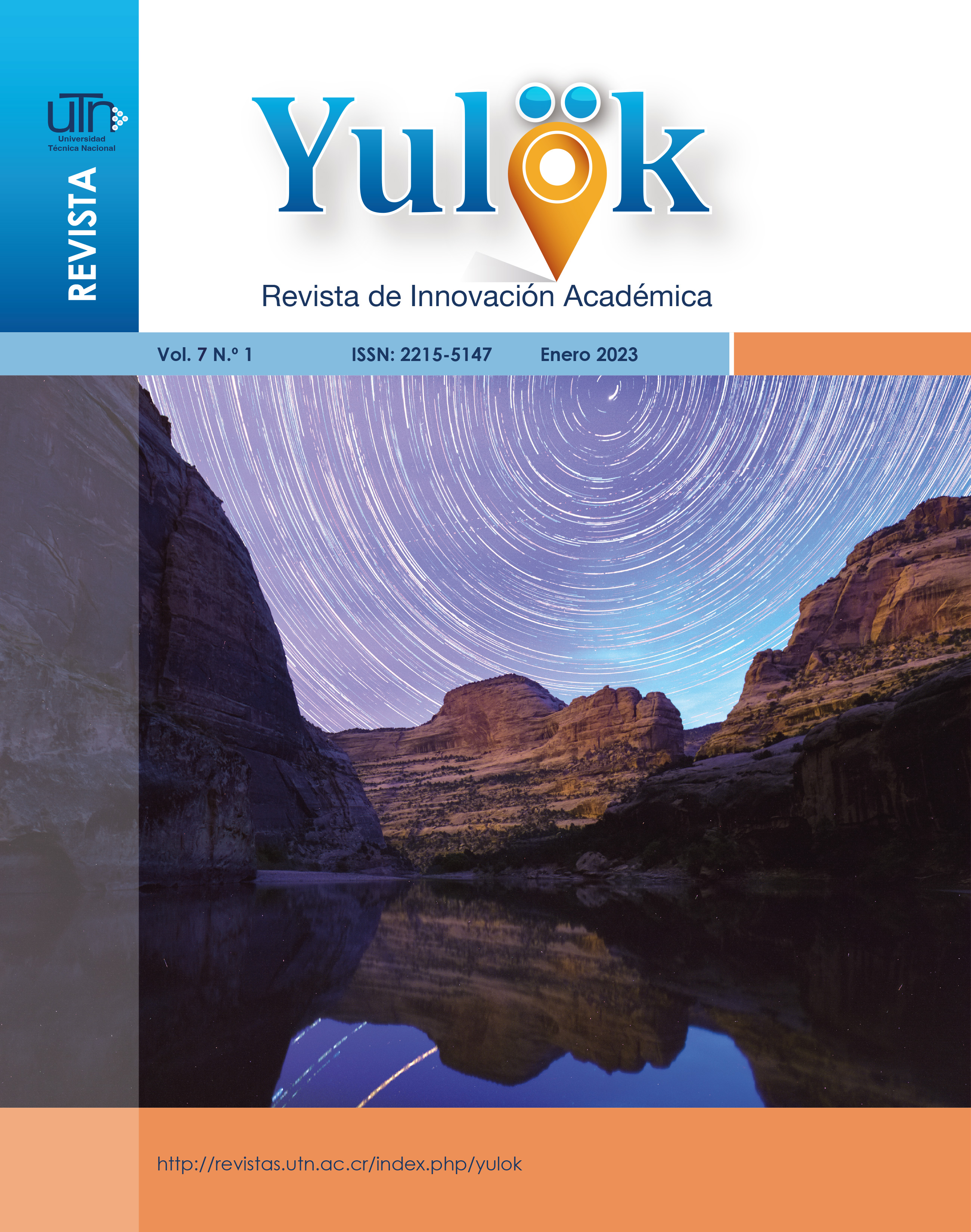UTN Artificial Ventilator Model Against Covid 19
Main Article Content
Abstract
Objective. Explain the development and description of the first respiratory ventilator model developed at the UNIVERSIDAD TÉCNICA NACIONAL (Costa Rica) from its conceptualization, organization, assembly, testing and commissioning, from the mechanical context to digital technicality. This device was put together by a group of students of the Electronic Engineering MAJOR, with the guidance of the authors of this article which became a remarkable job for the university community. Results. The main results proposed a table of costs, mathematical formulas working according to the variables that characterize the subject of breathing, speed and periods of inhalation and exhalation that are combined with the digital and mechanical elements so that it becomes a functional device. to health. Conclusions. A functional and economic model was created that allows one to save life, using PLA materials, iron on an ambu pump, thanks to a programming language that favors the control of the device in the motor.
Article Details
Section

This work is licensed under a Creative Commons Attribution-NonCommercial-ShareAlike 4.0 International License.
Todos los artículos publicados están protegidos con la licencia Creative Commons Atribución-NoComercial-CompartirIgual 4.0 Internacional
![]()
How to Cite
References
CRHOY. (2020, May 19). UTN Crea ventilador respiratorio para ayudar a pacientes COVID-19 | Crhoy.com. CRHoy.com | Periodico Digital | Costa Rica Noticias 24/7. https://www.crhoy.com/nacionales/utn-crea-ventilador-respiratorio-para-ayudar-a-pacientes-covid-19/
El País. (2020, May 19). Estudiantes UTN elaboraron primer prototipo de ventilador respiratorio para pacientes COVID-19. Diario Digital Nuestro País. https://www.elpais.cr/2020/05/19/estudiantes-utn-elaboraron-primer-prototipo-de-ventilador-respiratorio-para-pacientes-covid-19/
García, J. M. (2018). Montaje de los cuadros de control y dispositivos eléctricos y electrónicos de los sistemas domóticos e inmóticos. ELEM0111. IC Editorial.
Hernández, A. M. (sf). Cambios en la mecánica ventilatoria debido a variaciones de la PEEP Y la presión soporte: Estudio en sujetos sanos bajo ventilación mecánica no invasiva. Sistema de Información Científica Redalyc, Red de Revistas Científicas. Recuperado de . https://www.redalyc.org/journal/5763/576364367021/html/
Hernando, A., Guillamas, C., Gutiérrez, E., Sánchez-Cascado, G., Tordesillas, L., & Méndez, M. J. (2017). Técnicas básicas de enfermería. Novedad 2017. Editex.
Muñoz, A. M. (2018). Arduino. Edición 2018 Curso práctico.
Sánchez, M. (2017). Montaje de cuadros de control y dispositivos eléctricos y electrónicos de sistemas domótico. RA-MA Editorial.

